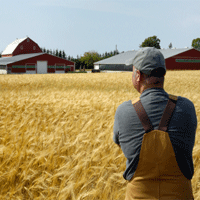TORONTO – It was a culinary meeting of the minds when more than 300 like-minded foodies converged on Toronto’s Direct Energy Centre Nov. 9 to discuss the importance of culinary tourism to the economic, cultural and social fabric of Ontario.
In opening the one-day symposium, organized by the Ontario Culinary Tourism Alliance (OCTA), Bill Duron, CEO of the Royal Agricultural Fair, highlighted the impact of agriculture on our lives. “We consider it a privilege to have your summit here at the Royal Agricultural Winter fair,” he said in his opening address. He pointed to the importance of food to the fair by highlighting the increased number of booths promoting food, wines and craft beers.
In kicking off the 2009 summit, Rebecca LeHeup, executive director of OCTA, and the driving force behind the conference, stressed that “the most important ingredient in culinary tourism is agriculture.” The day brought together 300 diverse stakeholders, including chefs, farmers, producers and educators who shared their wealth of knowledge and contacts to move the agenda forward. Since first setting a strategy for culinary tourism four years ago, the province has made great strides in further developing its mandate but now — says Barb Shopland, who created the strategy — “we need to assess how it’s doing.”
The day’s first speaker was Jon Ogryzlo, dean of Wine and Culinary, Niagara College. He spoke of the school’s new Food and Wine Sciences’ program, which currently boasts 600 students in the various programs under this umbrella, predicated on four pillars: Food/Culinary, Wine and Viticulture, Hospitality Tourism and Sustainability. “We’re looking for partnerships so we can focus on these four areas,” said Ogryzlo “and we’re looking at exchange programs.”
Kevin Brauch, host of the Food Network’s Thirsty Traveler moderated a lively panel discussion featuring Arlene Stein, events director at the University of Toronto’s Hart House; Jason Parsons, executive chef at Peller Estates; and Mike Wittamore of Wittamore Farms in Markham. “We have to showcase culinary tourism to the world,” said Stein, “A lot of people come here for a variety of reasons.” According to Parsons, “We have to come together to ask what culinary tourism is, then we have to sell it.” Wittamore reminded the audience of the difficulties farmers are facing, pointing to pork producers who have seen the price for each pig they raise decline rapidly in recent months. “The challenge for a lot of growers is you’ve been in it for a long time, but it’s not sustainable anymore. For people who are commodity driven, it’s a real challenge.”
Parsons stressed the need for restaurateurs to showcase unique products and experiences. “We’ve had to realize that when you have less people coming you have to have something different… You constantly have to renew what you do.”
On the farming side, renewal is coming in the shape of new products being developed in province. For example, some of the new crops being developed in Ontario are artichokes and East Asian vegetable crops, including red carrots. One of the panellists even pointed to the emergence of rice as a crop now being grown in B.C., and all of the panellists agreed that Canada needs to promote its strengths better. “We have more chefs in Canada per capita than anywhere,” stressed Stein. She also stated that the farm-to-table community is stronger here than even in places like Napa, which she says is more insular. ”We’re cheap to come to,” she said, acknowledging that the rising Canadian dollar has made us perhaps less competitive than we once were, while still representing a good value for the money spent.
The panellists agreed that media has an important role to play in promoting the value of culinary tourism. “Our media represents food very poorly here,” said Brauch pointing to newspaper companies that print three pages of food news once a week, compared to papers like the New York Times, which has an entire food section. Parsons noted, however, that perhaps restaurants need to invest more in the media to bring them up to speed on what they’re doing and why. “Give them the information and meet them halfway,” he suggested.
Ontario’s minister of Agriculture, Food and Rural Affairs, Leona Dombrowsky also touted the importance of innovation. “When we innovate it gives us a competitive edge,” she said. She urged delegates to make their voices heard to their local grocers. “If local products aren’t in your stores, tell the manager that you’re not happy about that. But, similarly, she said, “Be sure to tell them when something is good as well.” According to Dombrowsky, the Ontario government will be highlighting an ad campaign to encourage more restaurants and cafeterias to serve Ontario food
Other speakers of the day included Lori Stahlbrand and Chris Alward from Local Food Plus. Stahlbrand stressed that “local and sustainable are the cornerstones of having a sound agriculture system.” She warned, however, that Ontario’s farming community is at risk. Only 7,000 farmers of the more than 82,000 in the province are under the age of 35.
Capping the day, an afternoon panel session, called “Mapping a Culinary Destination,” featured three emerging culinary regions. Danielle Brodhagen, from Savour Stratford; Kerri King, from Durham Tourism; and Jaimi Ruoho-Long, from Peterborough and Kawartha Tourism spoke of the need for communities across Ontario to better promote their destinations by working with local farmers and chefs.
It’s been a fruitful year for the Ontario Culinary Tourism Allliance, which has grown from five regions to 15. “We’ve learned a lot over the past year, and we want to share that with everyone,” said OCTA’s LeHeup.


















